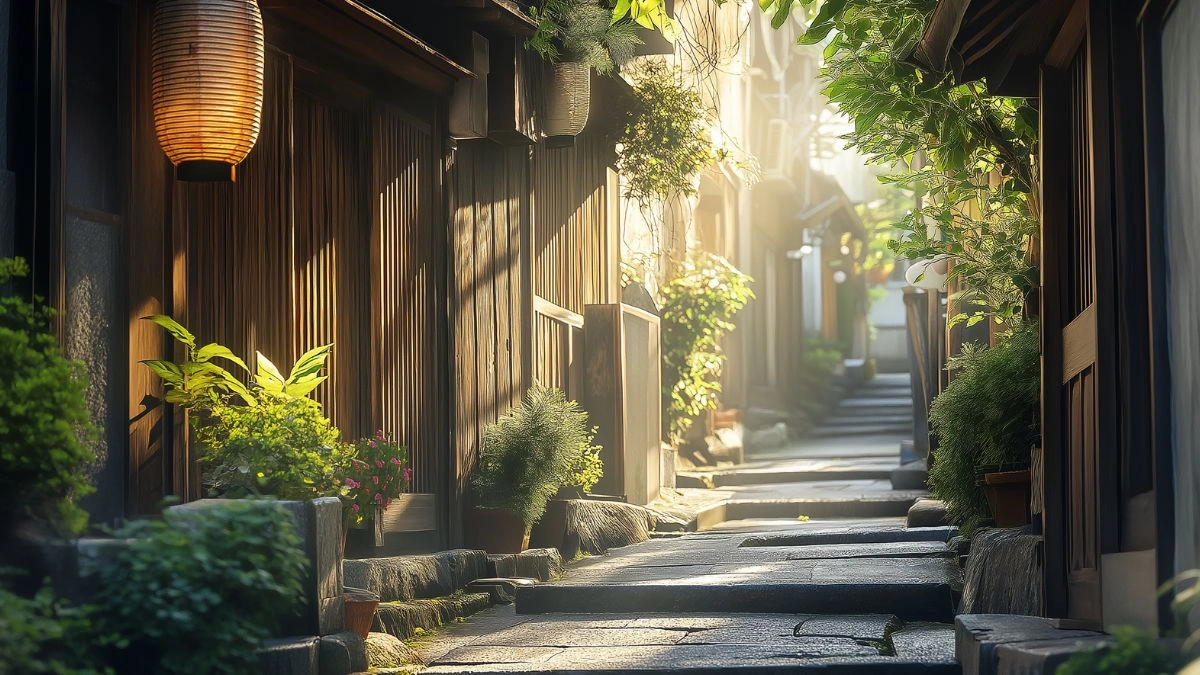Urban Serenity in Tokyo: Discovering Japan’s Aesthetic Vibes in a Modern Metropolis
Table of Contents
Tokyo is often seen through the lens of speed—bright lights, fast trains, and bustling streets. Yet, within this vibrant metropolis lies an unexpected calm—a quiet elegance woven into its neighborhoods, cafés, and cultural traditions. It’s this delicate harmony that defines the Japan aesthetic: a thoughtful blend of modern minimalism and timeless tranquility.
From moss-covered temple courtyards to perfectly arranged convenience store shelves, Tokyo is filled with small moments of serenity. Whether you’re walking through a bamboo-lined alley in Asakusa or sipping matcha in a hidden tea bar in Shibuya, the city reveals a quiet side that feels distinctly Japanese.
In this article, we’ll explore the aesthetic undercurrents that shape Tokyo’s urban serenity. You’ll discover the subtle design elements, spaces, and atmospheres that create a calming experience—even in one of the world’s most energetic cities. Perfect for lovers of mindful travel, design enthusiasts, and cultural explorers, this guide takes you through Tokyo’s most aesthetic and peaceful vibes.
Wabi-Sabi in the City: The Beauty of Imperfection in Urban Design
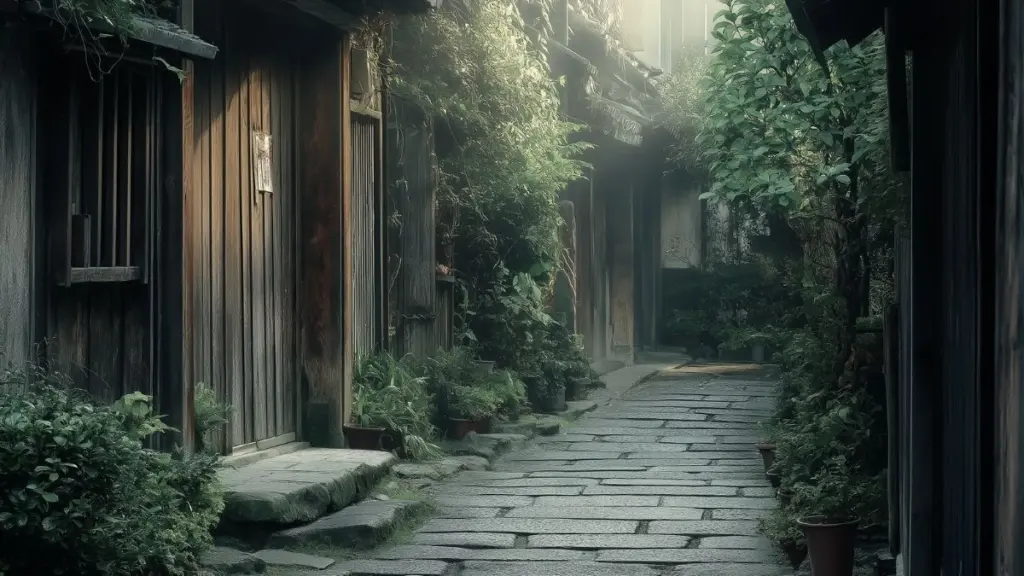
At the heart of Japanese aesthetics lies the philosophy of wabi-sabi—an appreciation of imperfection, impermanence, and simplicity. In Tokyo, this concept appears subtly across various urban spaces, from rustic alleyways to aging wood storefronts that proudly wear the patina of time.
You’ll find wabi-sabi in the crooked tiles of an old ryokan roof or the way shadows dance across a handmade paper lantern. Even ultra-modern architecture can express this aesthetic with textured concrete, unfinished wood beams, and quiet asymmetry that brings emotional depth.
The aesthetic isn’t just visual; it’s experiential. A walk through Yanaka, an old neighborhood in Tokyo, offers a living gallery of wabi-sabi charm—narrow paths, fading signage, and artisan shops tucked into weathered buildings.
Visual Breakdown: Wabi-Sabi Elements in Tokyo
| Element | Description |
|---|---|
| Aged Wood & Stone | Natural wear adds warmth and authenticity |
| Asymmetrical Layouts | Design that embraces irregular forms |
| Natural Materials | Bamboo, paper, stone used in tactile ways |
| Neutral Tones | Soft browns, grays, and earthy color palettes |
| Space & Silence | Open areas that invite reflection |
Zen Gardens and Quiet Courtyards in the Concrete Jungle
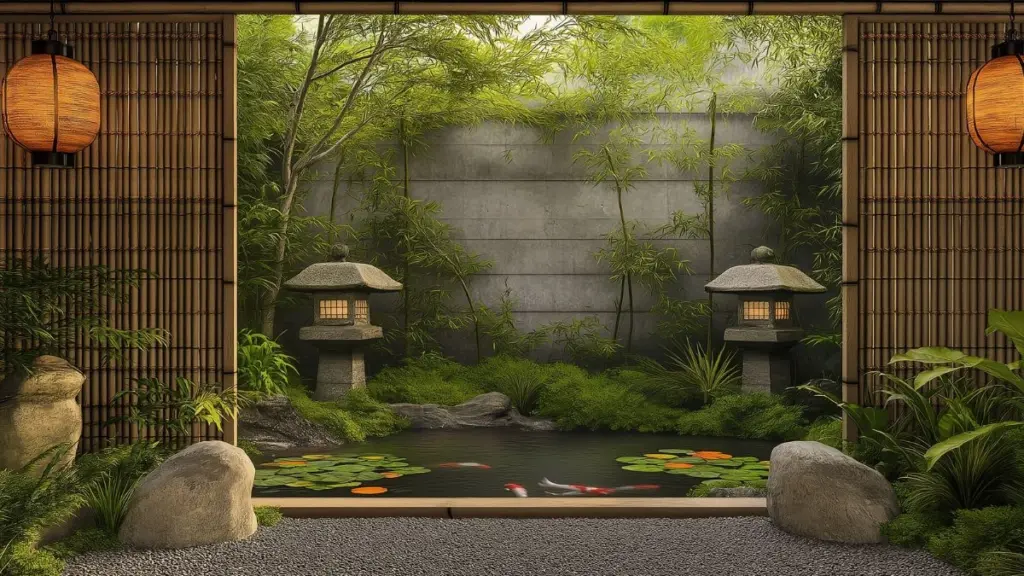
Even in the heart of Tokyo, pockets of calm exist in the form of tranquil courtyards and traditional gardens. Places like Koishikawa Korakuen and the gardens around Meiji Shrine offer serene, curated landscapes that reflect centuries of design tradition.
These spaces follow a deep respect for natural order and visual balance. Stones are placed to represent mountains, while koi ponds and raked gravel mimic flowing rivers. The design invites you to pause, breathe, and appreciate your surroundings—not just look at them.
In neighborhoods like Kagurazaka or near temples in Ueno, you’ll often stumble upon smaller courtyards that serve as meditative oases—places where the city’s rhythm seems to hush for a moment.
Visual Breakdown: Elements of Urban Zen Spaces
| Feature | Symbolism & Effect |
|---|---|
| Raked Gravel | Symbolizes water, calming visual rhythm |
| Koi Ponds | Represent peace, movement, and balance |
| Lanterns & Shrines | Add spiritual and historical depth |
| Seasonal Plants | Highlight nature’s cycles and transitions |
| Enclosed Layouts | Designed to create intimacy and focus |
Tokyo’s Minimalist Cafés: Sipping Calm in Everyday Life
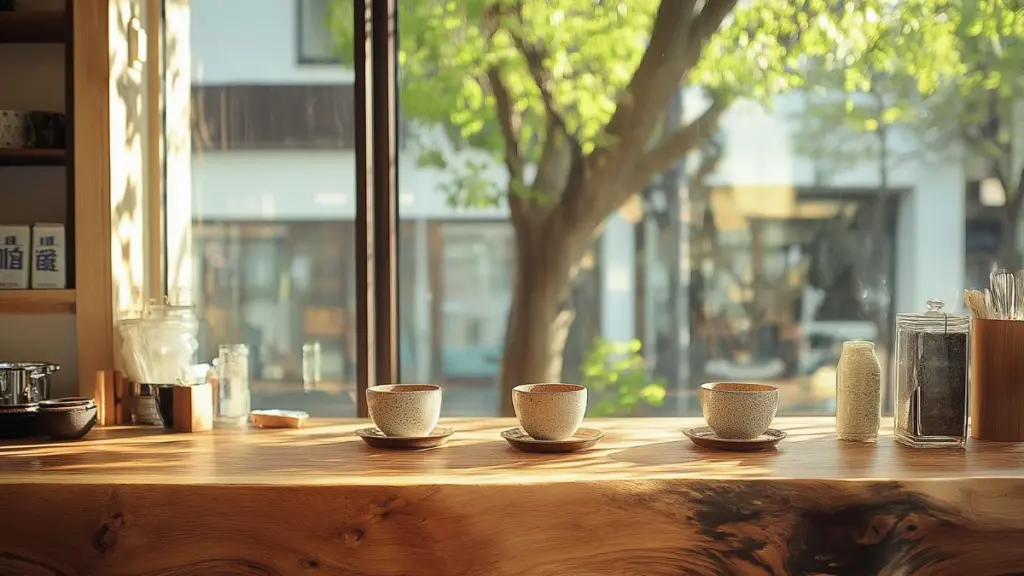
Café culture in Tokyo reflects a distinct aesthetic sensibility. Beyond the trend-driven spots of Harajuku and Shibuya, you’ll find quiet, almost spiritual coffee shops that embody Japanese minimalism. Clean lines, soft lighting, and carefully curated soundscapes make these spaces feel like modern temples of calm.
Whether it’s a pour-over served in hand-thrown ceramic or the muted palette of concrete, wood, and linen, these cafés are about more than caffeine—they’re experiences in aesthetic balance. They’re a must-visit for travelers seeking a slow moment in the urban rush.
Look for hidden cafés in Nakameguro, Daikanyama, or even tucked into side streets of Ginza. Many offer serene interior designs that highlight simplicity without sacrificing warmth.
Visual Breakdown: Key Features of Tokyo Minimalist Cafés
| Element | Aesthetic Contribution |
|---|---|
| Material Contrast | Concrete walls with warm wood furniture |
| Monochrome Colors | Soft whites, beiges, or charcoal tones |
| Natural Light | Large windows, filtered by sheer curtains |
| Handmade Ceramics | Adds organic textures and individuality |
| Quiet Soundscapes | Lo-fi or ambient music enhancing calm |
Tokyo’s Night Aesthetic – Neon Stillness and Urban Glow
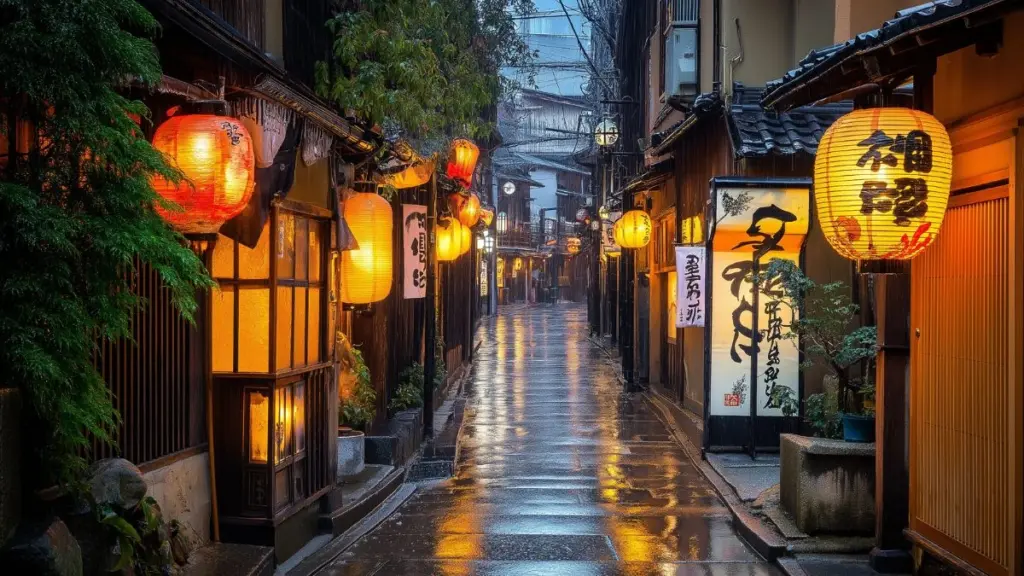
At night, Tokyo transforms. It becomes a city of cinematic beauty where neon reflects on wet pavement and lantern-lit alleyways seem to glow with mystery. The aesthetic at night is not loud but layered—an elegant interplay between shadow and artificial light.
Stroll through Golden Gai or Omoide Yokocho to feel the texture of time. Paper lanterns sway slightly above narrow lanes, illuminating stone paths and vintage signage. The sounds here are subdued: footsteps, clinking glasses, distant laughter.
Even modern areas like Shinjuku or Roppongi carry an aesthetic appeal at night. Skyscrapers shine with soft gradients of color, and reflections from signage ripple across puddles in choreographed chaos.
This is Tokyo’s urban serenity—redefined by light.
Visual Breakdown: Tokyo’s Night Aesthetic Vibes
| Feature | Visual Effect |
|---|---|
| Neon Signage | Creates ambient color contrast |
| Reflections | Enhances visual depth with water elements |
| Lantern Streets | Evoke nostalgia and cultural charm |
| Architecture Lighting | Emphasizes lines, texture, and modernity |
| Limited Motion | Scenes feel still despite city movement |
Seasonal Aesthetics: How Nature Shapes Tokyo’s Urban Vibes
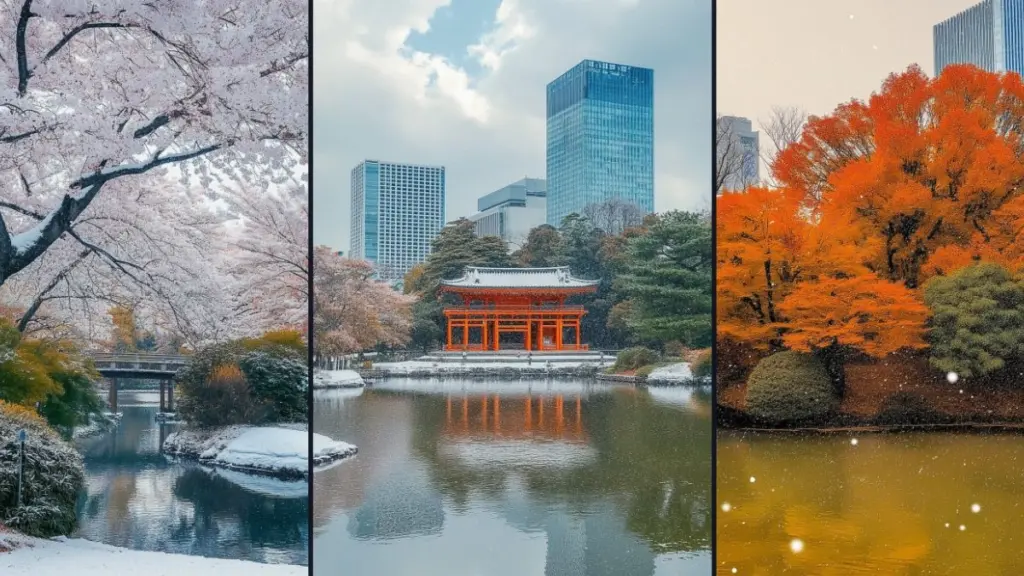
Tokyo’s seasons dramatically affect its visual language. Each transition brings a shift in both color and mood—from soft sakura petals floating through the air in spring to golden ginkgo trees lining autumn boulevards. The city is designed to highlight these transitions, making nature an integral part of the urban aesthetic.
In spring, parks like Ueno and Chidorigafuchi bloom with cherry blossoms, turning everyday walks into dreamlike experiences. In summer, rooftop gardens and riverfront paths invite moments of greenery and escape. Autumn sets the city ablaze with red maple leaves, while winter’s snow adds quiet minimalism.
Each season adds a layer of storytelling to Tokyo’s aesthetic—and locals embrace it through décor, food, fashion, and lifestyle adjustments.
Visual Breakdown: Seasonal Aesthetic Changes in Tokyo
| Season | Key Features & Emotions |
|---|---|
| Spring | Cherry blossoms, hanami gatherings, gentle hues |
| Summer | Bright greens, festival lanterns, water elements |
| Autumn | Fiery reds and oranges, cozy street scenes |
| Winter | Monochrome streets, snow on temple roofs |
Design Simplicity in Everyday Life – Tokyo’s Lifestyle Aesthetic
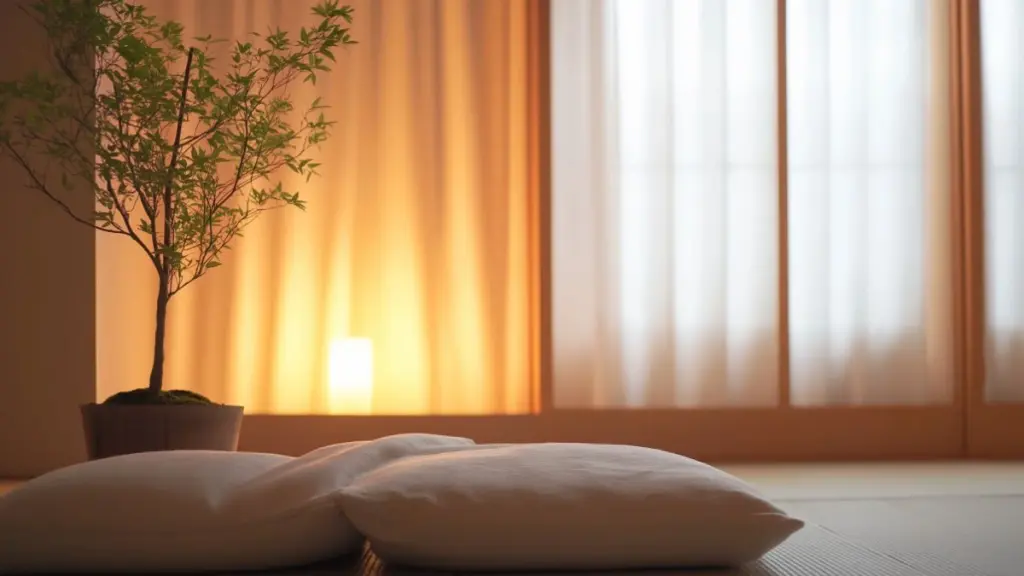
Beyond architecture and public spaces, Tokyo’s aesthetic sensibility seeps into daily routines. Bento boxes are not only meals—they’re artfully arranged palettes of color and form. Home goods stores like Muji showcase the perfection of simplicity with linen robes, ceramic bowls, and pine-scented candles.
Even convenience stores show visual discipline: carefully stacked rows, subtle lighting, minimal branding. Trains are spotless, signage is intuitive, and everything from packaging to presentation reflects mindfulness.
This lifestyle aesthetic is rooted in principles of ma (negative space) and shibui (understated elegance). Tokyo’s citizens are not just consumers of design—they are participants in a visually harmonious urban ritual.
Visual Breakdown: Everyday Aesthetic in Tokyo Life
| Lifestyle Area | Visual Signature |
|---|---|
| Food Presentation | Balanced, colorful, thoughtful layout |
| Home Design | Clean lines, soft fabrics, natural light |
| Public Transport | Clean signage, orderly flow, minimal ads |
| Retail Display | Neutral tones, logical product groupings |
| Packaging Design | Simple, eco-friendly, beautiful |
Conclusion
Tokyo’s aesthetic is a masterclass in balance. It offers intensity and quietude, chaos and order, all within the same city block. From the patina of historic alleys to the clean lines of minimalist cafés, from neon-lit nights to the hush of temple gardens, Tokyo invites you to see the beauty in contrasts.
What defines Tokyo’s Japan aesthetic vibes is not any one element, but the relationship between them—how architecture, design, nature, and time blend into a lifestyle of thoughtful beauty. For the mindful traveler, Tokyo isn’t just a destination—it’s an experience in urban serenity.

